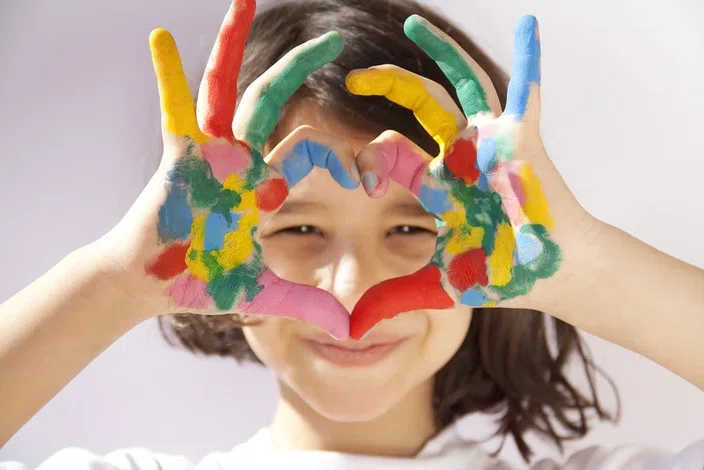
Improving educational outcomes for all students
Moving forward after the COVID pandemic and racial injustice (Part 1)
May 16, 2022
The following is the first installment in a two-part article written by Angela Clark-Louque, Ed.D., Ayanna Balogun, Ed.D., and Eboni White Kemp, Ed.D. The article is continued in the May 23 issue of EdCal.
Never in our lifetime could we imagine two pandemics causing our educational systems to shut down nationwide. Even though COVID-19 and the racial pandemic left us practically immobilized, we are now emerged in the “reopening of schools” phase. We have the opportunity to re-imagine and re-examine how to improve educational outcomes based on the impact of these concurrent pandemics.
The COVID-19 pandemic not only disrupted normalcy in our lives, but also disrupted the way students traditionally learned. Students transitioned from a brick-and-mortar learning environment to a virtual one. This transition forced the public education system to address the digital divide and holistic needs (emotional understanding, intellectual development, environmental values, social skills, and physical and mental health) of each student. Although we have seen some immediate effects in student learning, the “real” aftermath will not be clear until years to come.
In addition to COVID-19, our students had front row seats to the racial injustices that occurred before and during the pandemic. They witnessed the death of George Floyd, unacceptable and gruesome treatment of police brutality towards African Americans/Blacks, and violent hate crimes against Asian Americans. Though we have amazing people in public service, there is a need to address racial injustices with our students, so that they gain emotional intelligence, an understanding about what is, and what is not appropriate as a global citizen.
As a result of these two prolific incidents in our nation’s history, the American public education system is faced with its own demise and survival. There has been an epiphany and realization that we can no longer “do” schooling like business as usual. How are educators preparing to improve the learning environment for all students given these major interruptions in education? Preparation begins with delving into the four areas of improvement opportunities that the pandemics revealed:
- Social emotional learning for students and adults.
- Collective and individual teacher efficacy.
- Equitable practices to address the unfinished learning.
- The engagement of family and community partnerships.
Let’s be clear, these are not new concepts, however, when presented as priority, they can change the trajectory and outcomes in schools.
1. Social emotional learning for students and adults
According to the Collaborative for Academic, Social, and Emotional Learning, “social emotional learning (SEL) is an integral part of education and human development. It’s a process through which all young people and adults acquire and apply the knowledge, skills and attitudes to develop healthy identities, manage emotions, and achieve personal and collective goals, feel and show empathy for others, establish and maintain supportive relationships, and make responsible and caring decisions.”
With the aftermath of the COVID-19 pandemic and the current climate of racial injustices across the nation, there is a need for critical conversations around the social-emotional health of the students served in public education. There are a number of students and educators who have returned to school having experienced trauma from these two events. Therefore, site and district administrators must act with urgency to establish SEL supports. Administrators should rethink current policies and systems that have historically encouraged a “pushout” model for students faced with trauma and having difficulty managing their emotions. The school community should provide learning spaces for all staff to acquire skills dealing with trauma informed practices, restorative practices and adult SEL.
According to Tyrone Howard, renowned professor of education at UCLA in the Urban Schooling Division, in communities of color, educational systems need to “destigmatize mental health, model prosocial and positive mental behavior, and identify the community resources available.” For students to effectively reconnect successfully with the learning environment during their return, explicit SEL instruction must occur schoolwide. Site and district administrators must dedicate time within their master schedule for SEL and give their instructional staff members the responsibility to provide SEL instruction. This will allow students to cultivate, practice, and reflect on social-emotional competencies (self-awareness, self-management, social awareness, relationship skills and responsible decision-making) in ways that are developmentally appropriate and culturally responsive.
The research conducted by CASEL states that SEL allows educators to advance educational equity, establish authentic school-family-community relationships, and provide a safe, healthy and supportive environment for students. Through meaningful curriculum and instruction in this area, as well as ongoing monitoring of students’ emotional intelligence, students will feel empowered through the skills gained to understand and manage their emotions. This is what all educators should desire for their returning students dealing with the trauma from COVID-19 pandemic and the current climate of racial injustices across the nation.
2. Collective and individual teacher efficacy
After over 30 years of research, teacher efficacy continues to be a primary strategy for student success. Essentially, the self-efficacy of a teacher displays their level of confidence and the belief in one’s own self agency to promote equitable student learning. Psychologist Albert Bandura defined self-efficacy as “beliefs in one’s capabilities to organize and execute the courses of action required to produce given attainments.” Through his research, he found that the positive effects of collective teacher efficacy on student academic performance more than outweigh the negative effects of low socioeconomic status. Professor of education John Hattie’s research was also able to confirm collective teacher efficacy as the “new number one” influence related to student achievement.
Prior to the COVID pandemic, there were still teachers who were resistant to collaborating with their colleagues and operated alone. In essence they were “solo practitioners.” They were also focused on the academic success of their personal students, and were quick to remove students from the learning environment when students were not academically and socially successful. As we acclimate back to brick and mortar, teachers must believe they can create new opportunities and do so in a collective partnership with their colleagues. They must utilize this opportunity to start anew by utilizing their individualized strengths to address unfinished learning and caring for all students as they heal. Capitalizing on every teacher’s strengths and effectively collaborating within the learning environment leads to success for all students. Formalized processes and routines must be built to encourage reflection on instructional practices and the learning of all students. Reflection is critical to building self-efficacy individually and strengthening collective teacher efficacy.
Due to the circumstances surrounding the murder of George Floyd, police brutality against African Americans, and hate crimes against Asian Americans, schools need to provide outlets to openly discuss these effects on education. Cohesion, a major component of collective teacher efficacy, occurs through developing a common language that focuses on growth, emotional understanding, and monitoring the academic, behavior and social-emotional progress of the students within the learning environment. A cohesive culture and climate permits teachers to depend on one another to have courageous conversations about race. Teachers collectively decide how to provide instruction in a culturally proficient and relevant way. Strategically, they work together to create lesson plans and assessments and attend professional development that relates to all students’ cultures and leads to being more culturally relevant.
Angela Clark-Louque, Ed.D., is professor of Educational Leadership at California State University, San Bernardino, and an international speaker on social justice and equity. She can be reached at alouque@csusb.edu. Ayanna Balogun, Ed.D., is a principal in Rialto USD, community advocate and adjunct professor at University of Redlands. She can be reached at ayannabalogun@gmail.com. Eboni White Kemp, Ed.D., is a principal in Rialto USD and community leader. She can be reached at dreboniwhite@gmail.com.
Contact Us
www.acsa.org
© 2022 Association of California School Administrators








